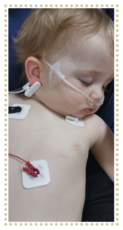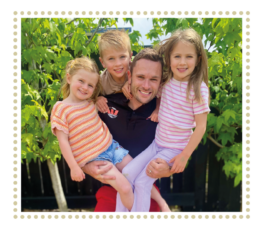Three state-of-the-art H145 helicopters are coming to Canterbury and the West Coast, and we need your help to get them in the air.
When lives are on the line, speed matters. Our new H145 helicopters are faster, with more life-saving capabilities.
Help us get these helicopters flying so we can save more lives, more often.
We need to raise $100,000 this Christmas for specialist pilot training for these world-class machines.
Every donation, whatever the size, will make a difference. It will help us ensure that when families like Tracey, Harry and Garnett need life-saving care, we will be there.

Tracey is still overcome with emotion when talking about the day the rescue helicopter saved her son.
“Without the rescue helicopter service Garnett would have died. It’s that simple.”
It was a regular Sunday morning, Tracey and Harry had just finished milking the cows on the Ashburton dairy farm they worked on. When they sat down for breakfast they noticed their one-year-old son Garnett wasn’t quite right; his breathing was shallow. They decided to take him to Ashburton Hospital.
“He went downhill so fast during that car journey. I just couldn’t believe what was happening. By the time we reached hospital Garnett had lost all colour and wasn’t responding to us.”
When they arrived at Ashburton Hospital, the Westpac Rescue Helicopter was immediately called. Tracey and Harry were terrified. They had no idea what was wrong with their beautiful boy.
When they arrived at hospital, Garnett was rushed for emergency surgery where it was found a nut had become stuck in Garnett’s bronchi tube, the tube that takes air into the lungs. The nut had caused an infection which was threatening Garnett’s life.
The day before Garnett had choked on some nuts, but they had given first aid and he had been back to his bubbly self. Tracey and Harry had no idea that just hours later, their son’s life would be saved by the rescue helicopter.
“Garnett is here today because of the skill and speed of the rescue helicopter and the crew. We will never forget what the rescue helicopter crew did for us.
They saved Garnett’s life.

As a father to three young children, Tom can image how terrified Tracey and Harry were that day. Being a dad has given him a new appreciation for the delicate nature of paediatric missions – it changes the way he sees them.
Tom says when the call comes in for a paediatric emergency, the rescue helicopter crew immediately feel the weight of what they’re flying into. They are on edge.
“Children can become very sick, very quickly. Their little bodies are physiologically different – they have less capacity to cope.”
Often children can’t communicate what’s going on, so paramedics have to look for the subtle signs and piece them together to understand just how unwell the child might be and what care they need.
“With children, minutes truly matter. Seconds count. When a child needs specialist and definitive care, they need it right away and that’s when the speed of the rescue helicopter can make all the difference.”
Donation form